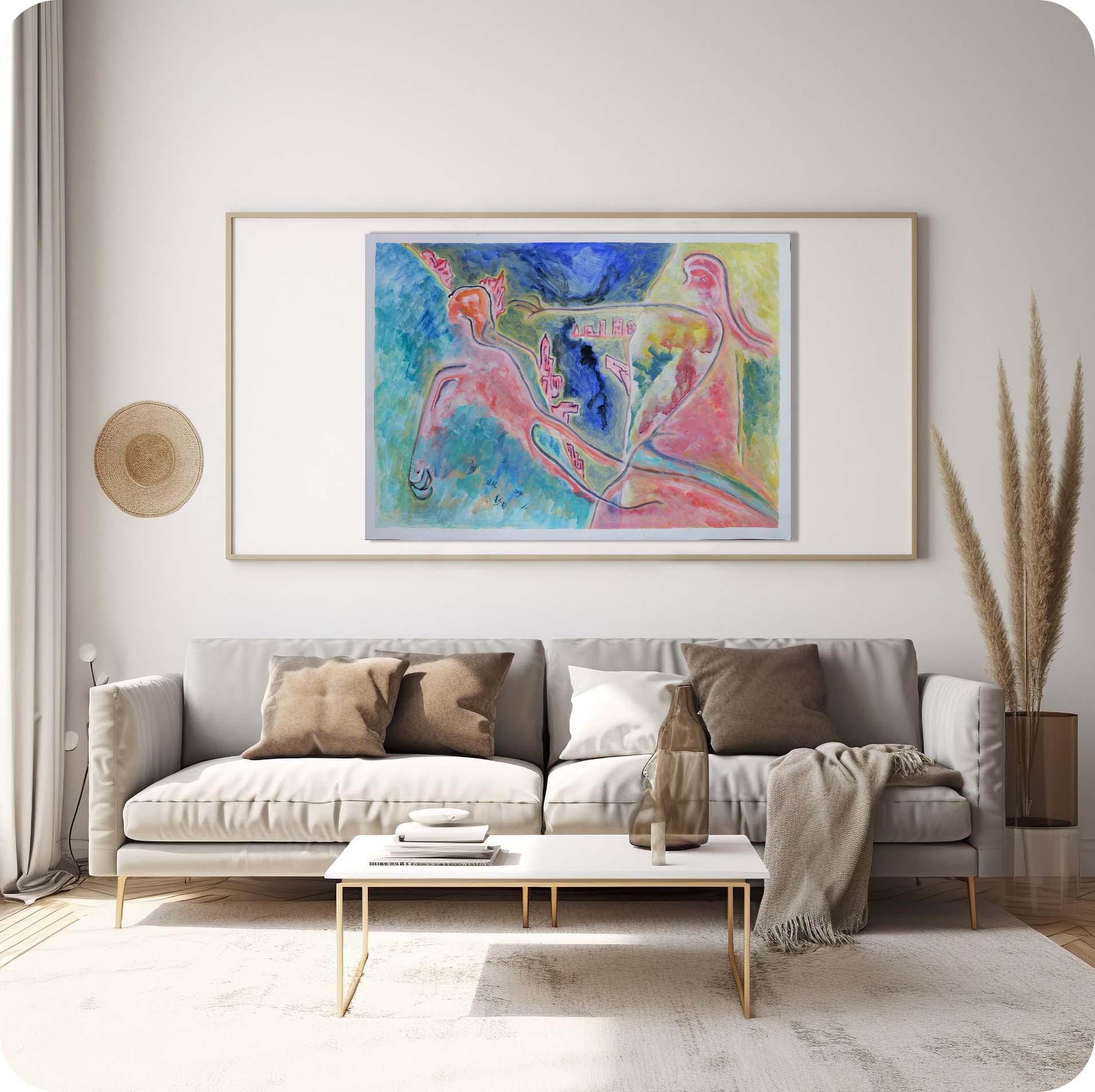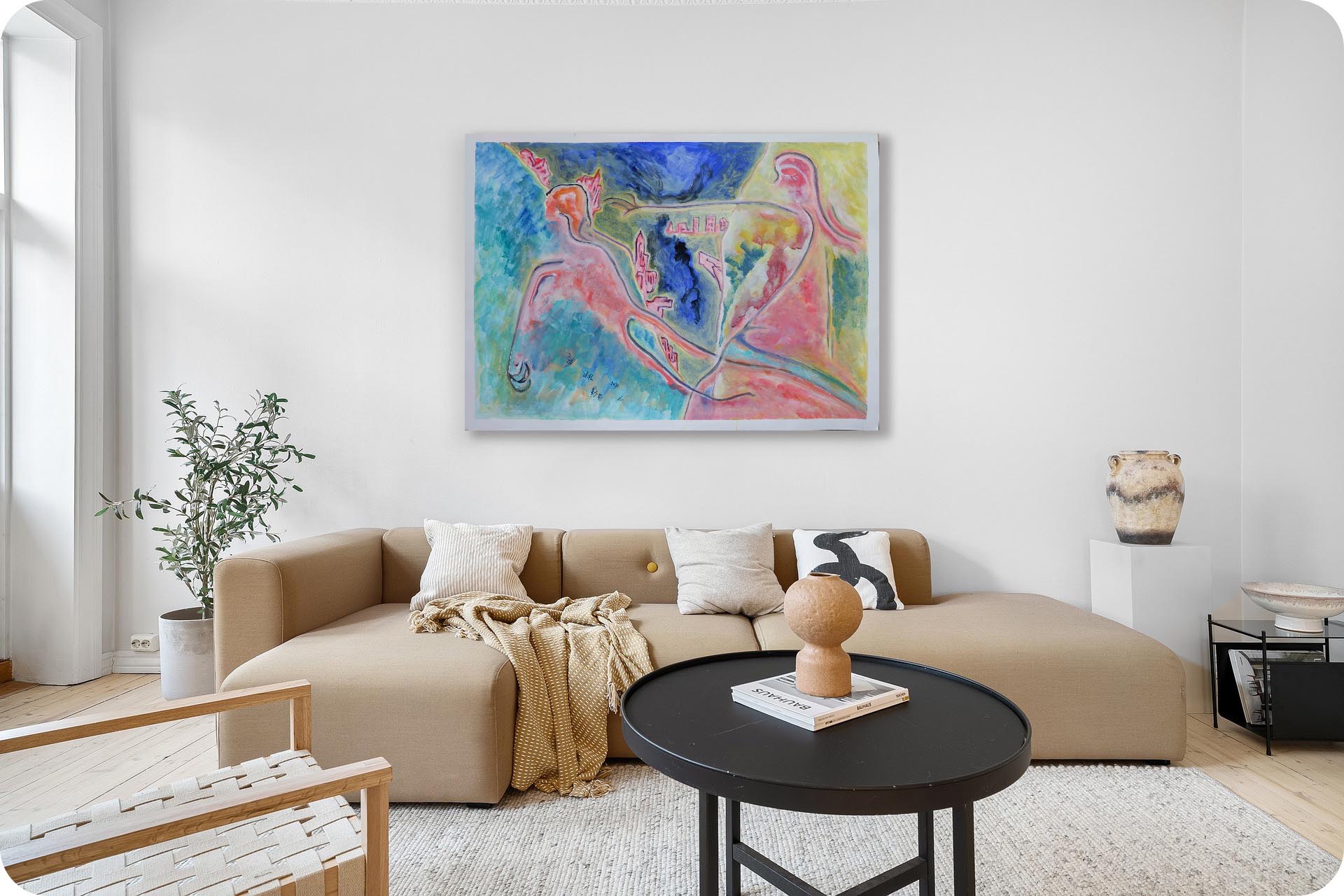This painting was created in 2024. The colors of this year are still bright but not dazzling. I have gradually found a balance point among the bright colors.
Inches: x in
Size without the frame: 79 x 109 cm
Country: China
Date: 2024
Materials: Acrylic paint on linen.
Condition: well preserved
Creative themes and style | My works revolve around the creative concept of "The land of humanity, People on the land".The people in the painting are people in nature, and the lines, shapes, and colors are close to nature. The nature in the painting is nature in the eyes of humans, existing in interaction with humans.I don’t pursue a series of works with a fixed and continuous style. I hope that the style of the pictures will synchronize with the changes in my life and always remain oscillating. The performance of the work must be in sync with the development of one's own life in order to be Sincere and powerful.Ideas are later.
An Interview with Artist Philo by Artphiloso Gallery
If you would like to collect this artwork or know more about the artist, please contact us.
big painting for living room,big pictures for living room wall,big wall pictures for living room,contemporary artwork for living room,decorative art for living room.


1. Atmosphere and Background
This painting constructs a surreal narrative space of nature, achieved through bold collisions of color and fluid outlines. The interwoven blues and greens in the background resemble drifting mist within a mountain forest, creating a hazy and tension-filled field that serves as the stage for the main forms. This atmospheric treatment dissolves boundaries, blurring the line between landscape and imagination.
2. Form and Linework
The outlines of human figures and abstracted wild beings are rendered with flexible, continuous lines. These connections deliberately dismantle separations between humans and nature, instead presenting them as intertwined entities. The fluidity of these lines suggests that the forms are not fixed but exist in a state of constant transformation, reinforcing the theme of symbiosis and coexistence.
3. Color and Technique
The artist employs subjective coloring rather than naturalistic tones: vibrant reds and pinks convey passion and vitality, while deep blues and purples suggest mystery and depth. The use of the wet-on-wet technique enables these colors to penetrate and blend into one another, producing a sense of permeability and resonance. Through these chromatic interactions, the painting communicates the intertwining of natural wildness with the warmth of human life.
4. Expressionist and Symbolic Influence
Breaking free from traditional realism, the work follows the creative logic of Expressionism, emphasizing emotional resonance over visual accuracy. The seemingly disordered lines and color fields conceal a deeper intention: the search for the spiritual essence of wildness. In this vision, mountains, forests, and wild creatures are not mere scenery but symbols of a primordial vitality that also inhabits humanity.
5. Philosophical Dimension
The significance of this painting lies in its ability to use artistic deconstruction and reconstruction to challenge fixed perceptions. It encourages viewers to reconsider the relationship between humanity and nature, not as separate categories but as interconnected states of being. When the grandeur of the forest and the vitality of wild things are transformed into poetic colors and free-form lines, the work becomes a philosophical meditation on nature’s energy and art’s tribute to primal life.
The two figures appear to be gazing at each other yet remaining apart, embodying the emotional tension between people: connected yet distant. It can be interpreted as a metaphor for intimacy, separation, or spiritual communication.
At the center, the deep blue shape resembles a “crack” or a “river”—both a division of space and a seam of time. This element adds drama to the composition and suggests an unbridgeable gap in human relationships.
Red conveys warmth and emotion, while green and blue symbolize calmness and nature. Their strong contrast imbues the painting with dual meanings of conflict and reconciliation—representing both the collision of passion and the balance of opposing energies.
This painting aligns with symbolic abstraction within Abstract Expressionism. The human figures are simplified into symbolic outlines, while the background colors flow freely. It emphasizes the spiritual expression of inner states and relationships rather than realistic narrative.
Abstract figurative artworks invite open interpretation—there is no single answer. Each viewer projects their own emotions and experiences into the piece. In art collecting, its value lies in this openness and intellectual depth, making it especially suitable for display in art spaces focused on spiritual dialogue or as part of a private collection.
A: Click here to view ARTPHILOSO's Guide for Collectors.
